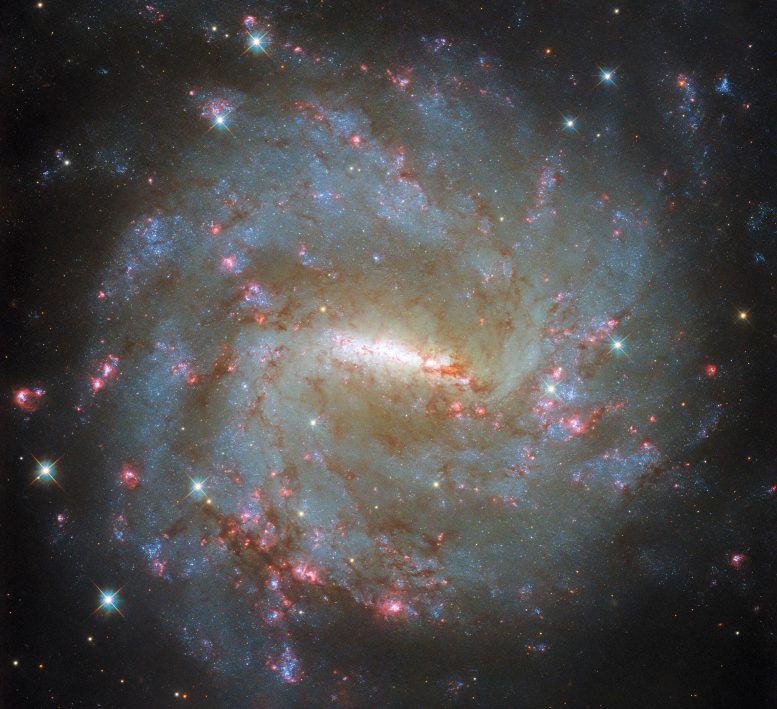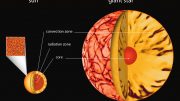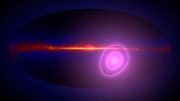
The barred spiral galaxy NGC 3059, situated 57 million light-years from Earth, is featured in this image, captured using data from the Hubble Space Telescope with various filters including the narrow-band H-alpha filter. This specific filter is crucial for identifying star formation regions by isolating the H-alpha emission at 656.46 nanometers, a key indicator of such processes. Credit: ESA/Hubble & NASA, D. Thilker
Spiral Galaxy NGC 3059, 57 million light-years away, is imaged using Hubble with a focus on H-alpha emission, revealing star formation.
This mesmerizing Hubble Space Telescope image features the barred spiral galaxy NGC 3059, which is located approximately 57 million light-years from Earth. The data used to compose this image were collected by Hubble in May 2024, as part of an observing program that studied a number of galaxies. All the observations were made using the same range of filters: partially transparent materials that allow only very specific wavelengths of light to pass through.
The Role of Filters in Astronomy
Filters are used extensively in observational astronomy, and can be calibrated to allow either extremely narrow or somewhat broader ranges of light through. Narrow-band filters are invaluable from a scientific perspective because certain light wavelengths are associated with specific physical and chemical processes.
For example, under particular conditions, hydrogen atoms are known to emit red light with wavelength value of 656.46 nanometers. Red light at this wavelength is known as H-alpha emission, or the ‘H-alpha line’. It is very useful to astronomers because its presence acts as an indicator of certain physical processes and conditions; it is often a tell-tale sign of new stars being formed, for example.
Utilizing H-alpha Emission
Thus, narrow-band filters calibrated to allow H-alpha emission through can be used to identify regions of space where stars are forming.
Such a filter was used for this image, the narrow-band filter called F657N or the H-alpha filter. The F stands for filter, and the N stands for narrow. The numerical value refers to the peak wavelength (in nanometres) that the filter lets through. The eagle-eyed amongst you may have noticed that 657 is very close to the 656.46 H-alpha line’s wavelength.
Data collected using five other filters contributed to this image as well, all of which were wide-band filters; meaning that they allow a wider range of light wavelengths through. This is less useful for identifying extremely specific lines (such as the H-alpha line) but still enables astronomers to explore relatively specific parts of the electromagnetic spectrum. In addition, collectively the information from multiple filters can be used to make beautiful images such as this one.









Be the first to comment on "Hubble Reveals Stunning Galaxy Concealing the Mysteries of Star Formation"